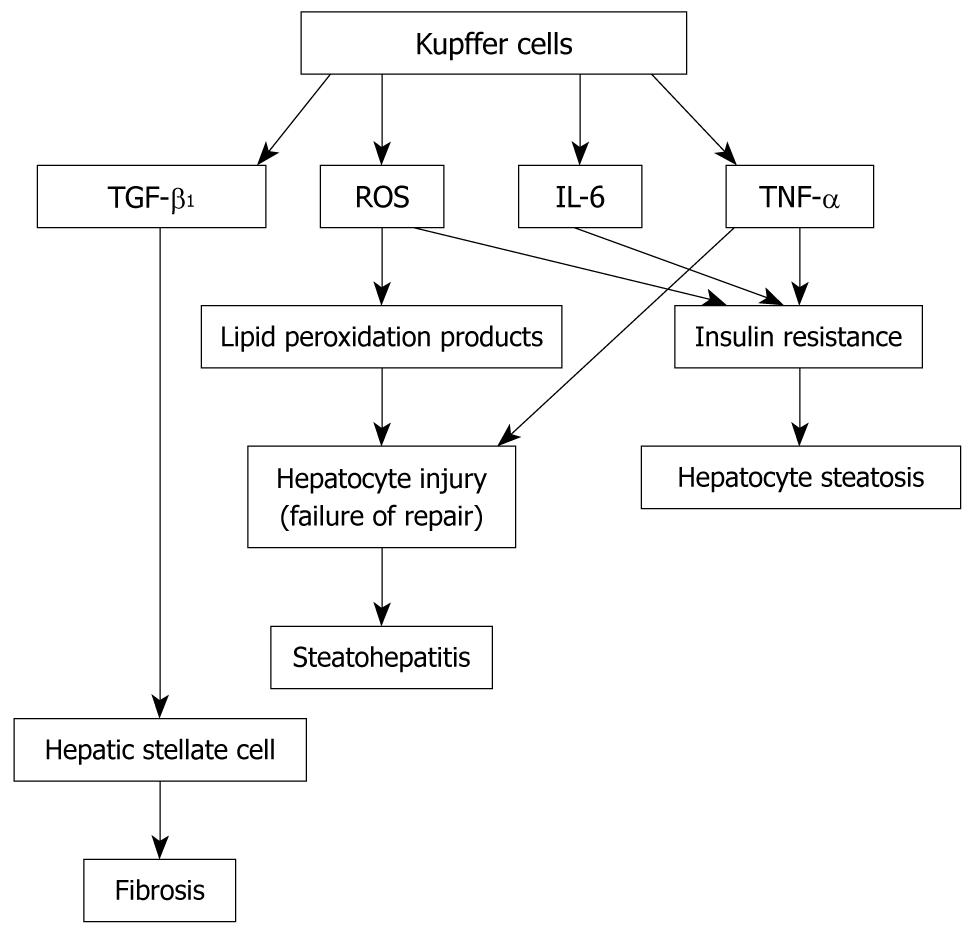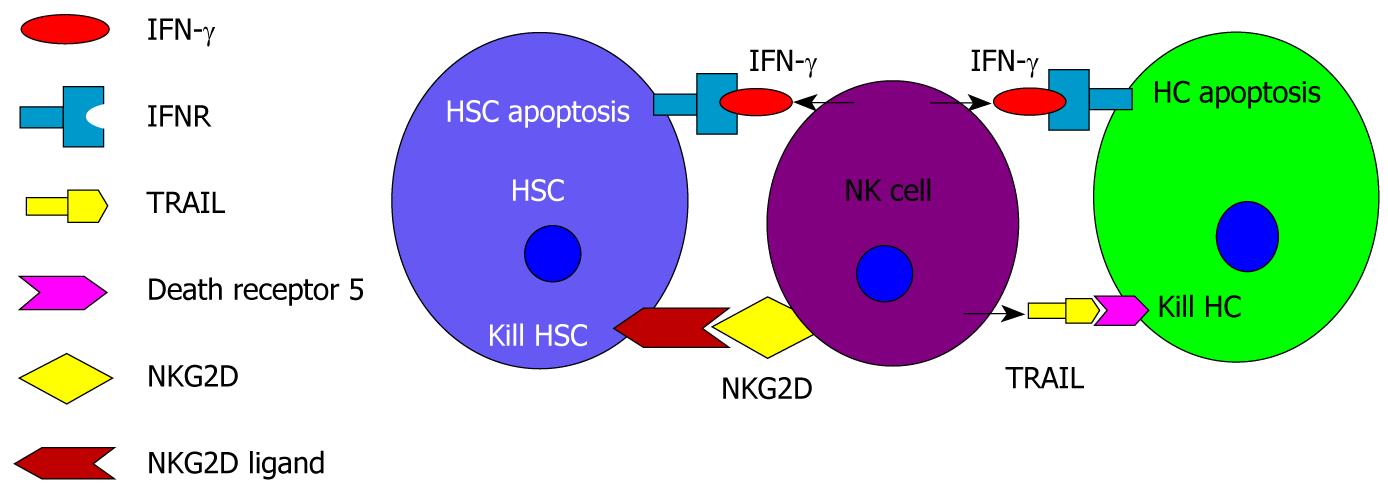Copyright
©2010 Baishideng Publishing Group Co.
World J Gastroenterol. Oct 7, 2010; 16(37): 4652-4660
Published online Oct 7, 2010. doi: 10.3748/wjg.v16.i37.4652
Published online Oct 7, 2010. doi: 10.3748/wjg.v16.i37.4652
Figure 1 Mechanisms for the role of Kupffer cells in the development of nonalcoholic fatty liver disease.
(1) Activated Kupffer cells (KCs) produce reactive oxygen species (ROS), interleukin-6 and tumor necrosis factor-α (TNF-α), which induce insulin resistance, leading to hepatocyte steatosis; (2) Activated KC-derived ROS causes lipid peroxidation production. Lipid peroxidation products and KC-derived TNF-α result in hepatocyte injury. Failure to repair hepatocytes after injury promotes the development of steatohepatitis; and (3) Activated KCs produce transforming growth factor-β1, which activates hepatic stellate cells. Activated hepatic stellate cells produce large quantities of extracellular matrix, leading to fibrosis.
Figure 2 Potential roles of hepatic natural killer cells in the development of nonalcoholic fatty liver disease.
Hepatic natural killer (NK) cells may have two different roles in the pathogenesis of nonalcoholic fatty liver disease. (1) NK cells have anti-fibrotic effects. NK cells release interferon-γ (IFN-γ), which combines with its receptor to induce hepatic stellate cell (HSC) apoptosis. Early activated HSCs express increased levels of natural killer group 2, member D (NKG2D). NK cells can kill early activated HSCs by binding NKG2D on NK cells with NKG2D ligand on HSCs; and (2) NK cells induce hepatocyte injury. NK cell derived IFN-γ results in hepatocyte apoptosis. NK cell derived-tumor necrosis factor-related apoptosis-inducing ligand combines with its death receptor 5 to kill hepatocytes. HC: Hepatocyte; IFNR: Interferon-γ receptor; TRAIL: Tumor necrosis factor-related apoptosis-inducing ligand.
- Citation: Zhan YT, An W. Roles of liver innate immune cells in nonalcoholic fatty liver disease. World J Gastroenterol 2010; 16(37): 4652-4660
- URL: https://www.wjgnet.com/1007-9327/full/v16/i37/4652.htm
- DOI: https://dx.doi.org/10.3748/wjg.v16.i37.4652










